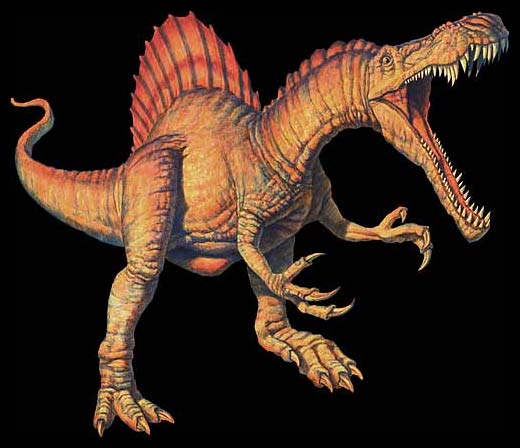Big Dinosaurs Were Hot, Study Suggests

A new study helps answer a longstanding dinosaur mystery by revealing that the largest dinosaurs could likely maintain warm body temperatures while their smaller cousins were probably more similar to modern cold-blooded reptiles.
Scientists have debated the body temperature of dinos for years, mainly whether the beasts were cold-blooded ectotherms, like reptiles, or warm-blooded endotherms, like mammals and birds.
While warm-blooded creatures can regulate their body temperature, ectotherms can't and have body temperatures roughly equivalent to their surrounding environment.
A third hypothesis is that similar to modern day alligators, Galapagos tortoises, and Komodo dragons, large dinosaurs relied on a process called thermal inertia to maintain a body temperature several degrees warmer than the environment.
Thermal inertia is a body's ability to conduct and store heat that is generated either through metabolism or moving around. Large animals are typically well equipped for this mechanism because of their low body surface to body volume ratio. For example, an elephant loses heat at a slower rate than a mouse.
Spinosaurus, one of the biggest carnivores ever to roam the planet. CREDIT: Joe Tucciarone. See more of his dinosaur art.
Researchers entered dinosaur growth trajectories—taken from recently published studies estimating the maximum growth rates and masses of eight dinosaur species—into a computer model to provide estimates of body temperature. (They tested the validity of the model by successfully predicting the body temperatures of different-sized living crocodiles)
As suspected, the model revealed that body temperature increased with body size for seven species and that the largest dinosaurs had relatively constant body temperatures—similar to modern warm-blooded creatures—and they kept their heat up through thermal inertia.
Get the world’s most fascinating discoveries delivered straight to your inbox.
The model shows that a small, 26-pound dino would have a body temperature of roughly 77 degrees Fahrenheit—about the same as environmental temperatures at the time, indicating that the animal acquired heat from external sources, much like a small, modern reptile.
A 14-ton beast, however, ran a temperature around 105.8 degrees Fahrenheit. The largest dinosaur in the study, Sauroposeidon proteles, weighed in at about 60 tons and had a body temperature, the study suggests, of about 118 degrees Fahrenheit, which is just past the upper temperature limit for most animals, leading the researchers to suggest that extremely high body temperatures might have been the only thing preventing dinosaurs from growing even larger.
Dinosaurs likely got warmer as they became adults. A 661-pound adult dino probably ran a temperature 37 degrees Fahrenheit warmer than as a juvenile, the scientists conclude. The difference was even greater for a 27-ton Apatosaurus, which was 68 degrees Fahrenheit warmer as an adult.
The study is detailed in the August issue of the journal PLoS Biology.
- Gallery: Dinosaur Fossils
- Dinosaurs that Learned to Fly
- Scientists Debate Dinosaur Demise
- The Biggest Carnivore: Dinosaur History Rewritten
- How Dinosaurs Might Have Walked
- A Brief History of Dinosaurs
- All About Dinosaurs
 Live Science Plus
Live Science Plus





